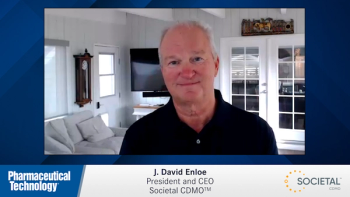
Expanding International GMP Collaboration
Medicine regulatory agencies in the EU, US and Australia have been successfully collaborating for some time now in the area of GMP inspections of API manufacturers.
Medicine regulatory agencies in the EU, US and Australia have been successfully collaborating for some time now in the area of GMP inspections of API manufacturers, but now the partners are seeking to further expand the international effort by looking to include additional partners.
The World Health Organization has also agreed to join the collaboration and will be taking part through its Prequalification of Medicines Programme. This is an initiative that aims to make quality priority medicines available to those who need them, and includes evaluation, inspection and quality monitoring activities, as well as building national capacity for sustainable manufacturing.
The current participants in the project are the EMA, EU member states, the European Directorate of the Quality of Medicines and Healthcare, the FDA and the Australian Therapeutic Goods Administration. Collaboration has involved sharing inspections information about API manufacturers (particularly those outside of the participating countries) and conducting joint inspections.
An initial pilot phase of the project involving the EMA, the FDA and the TGA ran from December 2008 to December 2011, during which nearly 100 inspection reports were shared and 9 joint inspections conducted. Last year, the agencies
“The project has contributed substantially to a better understanding of the regional approaches to inspection and the building of mutual confidence,” explained a document on the EMA’s website. “To further develop collaboration, all participants were supportive of continuing the API inspection collaboration, and extending the project to new contributors.”
The current participants in the project have agreed that clear criteria needs to be established for any potential new participants to be accepted, as well as for maintaining ongoing participation. As such, the EMA has published a document titled Programme to rationalise international GMP inspections of active pharmaceutical ingredients/active substances manufacturers, which outlines the common principles and procedures that will be necessary for successful collaboration.
However, if a potential new partner does not meet the criteria listed in the document, they may still be accepted as partners for the benefit of global health. In addition, authorities who may not yet be in a position to participate (or who may not want to collaborate) may still request access to the information sharing. In this cases, information sharing will be facilitated in a way that does not compromise any confidential information.
The EMA document talking about the programme is not too long (6 pages) but there are too many points to list here. Below are a few key principles from the document to show what the programme aims to achieve. The whole piece is available to read on the
- The reference GMP standard for inspections will be ICH Q7. For sterile products not covered by this guideline, regional guidelines will be followed.
- Participants agree to share inspection plans and outcomes.
- Participants are responsible for ensuring that appropriate confidentiality arrangements are in place.
- If an inspection results in regulatory action or license suspension, this decision will be shared with the other authorities.
More about international efforts in the area of joint inspections can be read these related articles, which are available on our website
The above-mentioned programme is also not the only activity going on in the area of regulatory harmonisation in the pharmaceutical industry. The Pharmaceutical Inspection Convention and Pharmaceutical Inspection Co-operation Scheme (PIC/S) are other initiatives that aim to promote active and constructive co-operation in the field of GMP. Read more about this on the
Newsletter
Get the essential updates shaping the future of pharma manufacturing and compliance—subscribe today to Pharmaceutical Technology and never miss a breakthrough.

